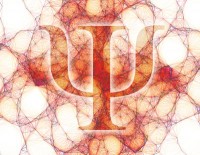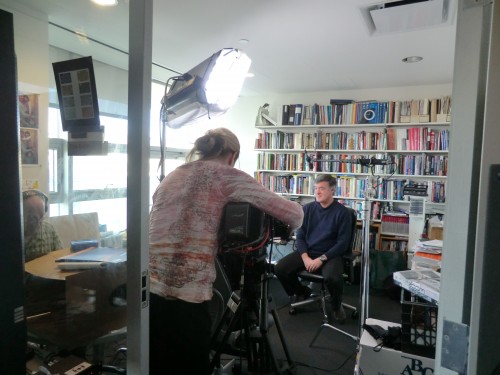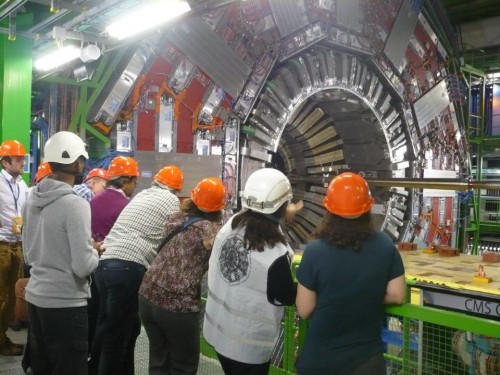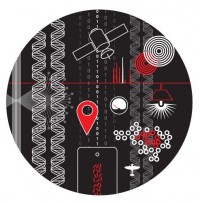Tag archives: Facebook poll
Has Voyager 1 left the solar system yet?
By James Dacey

Artist’s concept of NASA’s Voyager spacecraft. (Courtesy: NASA/JPL-Caltech)
“It is the consensus of the Voyager science team that Voyager 1 has not yet left the solar system or reached interstellar space.”
That is what Voyager scientist Edward Stone had to say on the matter back in March following reports that NASA’s most intrepid explorer had finally passed beyond the edge of our solar system. Today, three new papers published in Science back up this statement, asserting that the Voyager 1 had instead entered a distinct section at the edge of the solar system.
View all posts by this author | View this author's profile
Which type of large-scale facility has contributed the most to condensed-matter physics?
By Hamish Johnston

Earlier this week my colleague James Dacey was filming in Grenoble, which is home to two major facilities used by condensed-matter physicists: the European Synchrotron Radiation Facility (ESRF) and the Institut Laue-Langevin (ILL). His trip has inspired this week’s poll question, which pits coherent photons against thermal neutrons.
The ESRF and other synchrotron facilities produce coherent beams of synchrotron radiation. These have proven particularly useful to physicists studying soft and biological materials as well as the electronic, atomic and molecular structures of hard materials such as crystals. Although I don’t think that any Nobel prizes have been awarded for condensed-matter physics done at a synchrotron, the 2009 chemistry Nobel was shared by Venkatraman Ramakrishnan, who used synchrotron radiation to work out the structure of ribosomes.
View all posts by this author | View this author's profile
In the coming decade, which industry sector will benefit the most from physics research?
By Hamish Johnston
What physics-related industry employs 30,000 people in the UK?
The answer, according to the Institute of Physics (IOP), is the country’s extremely successful space industry – which has been expanding steadily for decades and continues to develop an impressive array of satellite and related technologies. Indeed, the space sector has enjoyed an average annual growth rate of 7.5% since 2008. Not bad going when you consider that the rest of the UK (and much of the world) has been in an economic slump.
Space is just one of the applications of research covered in Physics: Transforming Lives – a 68-page report prepared by the IOP in partnership with EPSRC and the STFC, both of which fund physics research in the UK.
Which Nobel-prize-winning physics invention has had the most profound impact on society?
By James Dacey

Physics has brought transformative inventions. (Courtesy: iStockphoto/Péter Mács)
Earlier this week my colleague reported the death of Heinrich Rohrer, the Swiss condensed-matter physicist who shared the 1986 Nobel Prize for Physics for the invention of the scanning tunnelling microscope (STM) at IBM’s Zürich Research Laboratory. Rohrer shared one half of the prize with his IBM colleague Gerd Binnig, while the other half went to the West German Ernst Ruska for his invention of the electron microscope (EM).
By bringing into view the atomic world, EMs and STMs have undoubtedly had a huge impact on science. Before their invention, optical microscopy had been a truly transformative technology. But it had been fundamentally limited to seeing things that are (roughly speaking) larger than the wavelength of the light used to produce the image. And since the wavelength of visible light is some 10,000 times larger than the typical distance between two atoms, we could not see individual atoms.
Do you try to pronounce physics terms as they sound in their language of origin?
By Hamish Johnston

German words in the physicist’s lexicon. (Image by Mathew Ward)
Like many disciplines, physics incorporates words from a number of different languages – and this can often leave a physicist tongue-tied.
How should a native English speaker pronounce Einstein, for example? Should it be the Germanic “Ein-shtein” or the anglicized “Ein-stein”? How should one say De Broglie, Raman or Bernoulli? Should a native English speaker even attempt zitterbewegung, or translate it to “trembling motion”?
I’m sure that some physics terms of English origin are tricky for native speakers of other languages, and their pronunciations are sometimes adjusted accordingly.
Some believe that making an effort to use the original pronunciation shows respect and knowledge of the origin of a word. Others are happy to use the pronunciation they are most comfortable with.
View all posts by this author | View this author's profile
Hawking’s academic boycott divides opinion
By James Dacey
Do you agree with the principle of academic boycotts?
Yes
No
Have your say by taking part in this week’s Facebook poll. As always, please feel free to explain your answer by posting a comment on Facebook or below this article.
This question has arisen after it was revealed yesterday that Stephen Hawking will be boycotting a prominent conference in Jerusalem in protest against the policies of the Israeli government. The British cosmologist and science communicator had been set to talk at the Israeli Presidential Conference: Facing Tomorrow, which will take place in June and which will feature a string of high-profile speakers, including Bill Clinton and Tony Blair. But the University of Cambridge has confirmed that Hawking, who is director of research at its Centre for Theoretical Cosmology, has pulled out of the conference for political reasons. Physics World has spoken to a university spokesperson who confirmed that Hawking has sent a letter to the conference organizers to explain his decision not to take part. The UK newspaper the Guardian has today published what it says is the full text of this letter, dated 3 May.
“I accepted the invitation to the Presidential Conference with the intention that this would not only allow me to express my opinion on the prospects for a peace settlement but also because it would allow me to lecture on the West Bank. However, I have received a number of e-mails from Palestinian academics. They are unanimous that I should respect the boycott. In view of this, I must withdraw from the conference. Had I attended, I would have stated my opinion that the policy of the present Israeli government is likely to lead to disaster.”
View all posts by this author | View this author's profile
What are quantum wavefunctions?
By James Dacey

Seeking the meaning of psi. (Courtesy: Pasieka/Science Photo Library; Mat Ward)
In the May issue of Physics World, science writer Jon Cartwright explores some of the most profound questions about the nature of reality. His feature, “The life of psi”, engages with an apparently simple question: what are quantum wavefunctions? Of course, like many of the most interesting questions in physics, the answer to the question is far from elementary. In fact, it is a question that goes right to the heart of quantum mechanics and philosophy, and one that has puzzled some of the greatest minds for the best part of a century.
View all posts by this author | View this author's profile
What type of video would you like to see more of on physicsworld.com?
By James Dacey

Physics World film shoot at MIT Media Lab.
The proliferation of online video in recent years has triggered tidal waves of content across the globe. As well as all the dancing cats and piano-playing dogs, it has brought new opportunities for journalists to tell stories in more visual and personal ways.
View all posts by this author | View this author's profile
What do you most hope the LHC will discover after it is switched back on in 2015?
By James Dacey

Admiring the insides of the CMS detector at CERN.
My colleague, Hamish Johnston, has just returned from a trip to CERN, where he was granted access to the insides of the Large Hadron Colider (LHC), which is currently being upgraded. He has shared some great photos from his trip on the Physics World Facebook page, including some snaps of the interior of the detector experiments.
What is the best way to measure a researcher’s contribution to science?
By James Dacey

Comparing apples and oranges. (Courtesy: iStockphoto/Raymond Gregory)
In an opinion article just published on this website, the historian and philosopher Robert Crease discusses the pitfalls when trying to measure the “value” of artefacts in culture and society. The article was inspired by an appearance Crease made at a group debate at the Museum of Modern Art (MoMA) in New York City. The panel were trying to identify ways to measure the museum’s impact on culture and the wider economy.
Crease refers to something known as Goodhart’s law, which he explains as follows.
“Named after the British economist Charles Goodhart, who devised it in 1975, the law essentially says that once a measure is chosen for making policy decisions, it begins to lose value as a measure. Goodhart applied it to banking policy, but in other fields, too, measurement can distort not only the practice being measured, but also perception of the goal.”
View all posts by this author | View this author's profile
